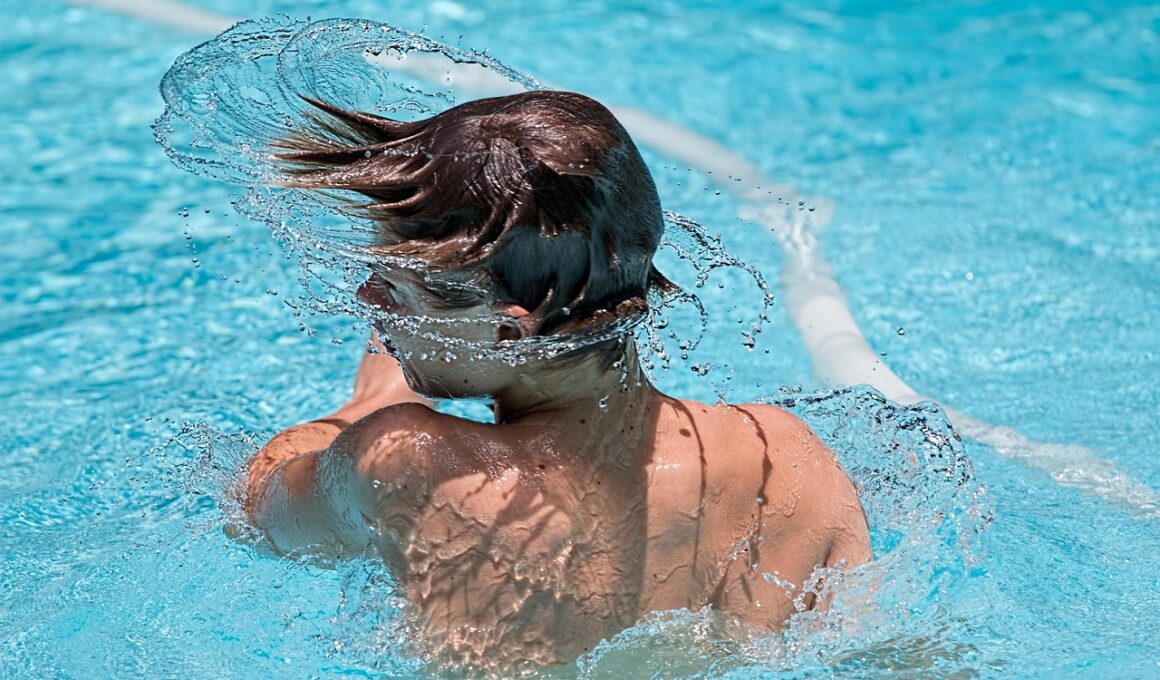Swimming as a Therapeutic Exercise for OCD
Obsessive-Compulsive Disorder (OCD) affects millions of people worldwide, often disrupting daily life and routines. Traditional treatments include cognitive-behavioral therapy (CBT) and medications, but these may not be sufficient for everyone. Indeed, incorporating physical activity into treatment plans can greatly enhance overall effects. Swimming emerges as an exceptional form of exercise that not only promotes physical health but also serves as a therapeutic tool for managing OCD symptoms. Engaging in water activities can provide a calming effect, allowing individuals with OCD to experience a sense of freedom. This experience helps mitigate anxiety, resulting in a reduction in obsessive thoughts and compulsive behaviors. Through rhythmic movements and controlled breathing, swimmers may discover improved focus. This focus proves beneficial in challenging negative thoughts while garnering a sense of control over their mental state. The overall experience of swimming leads individuals to engage with themselves and allows for a therapeutic respite from their struggles. Furthermore, regular swimming routines contribute to improved mood and reduced stress, creating a foundation for greater mental well-being. Transitioning into these routines may provide a sense of accomplishment, encouraging continued engagement and exploration.
Physical Benefits of Swimming
Swimming exercises various muscle groups, boosting physical strength and endurance, ultimately supplying overall benefits to mental health. Regular swimming sessions improve cardiovascular fitness and lung capacity, allowing individuals to develop better stamina over time. This physical scalability helps reduce anxiety levels and elevates mood through the release of endorphins. These endorphins are essential for promoting happiness and fighting off stress, providing individuals battling OCD with necessary psychological support. The element of immersion in water creates a soothing environment, resulting in decreased muscle tension and heightened relaxation. This relaxation builds resilience against the stressors that often trigger OCD behaviors, ultimately decreasing the frequency and intensity of intrusive thoughts. Moreover, swimming is gentle on the joints, meaning it can be practiced at varying intensity levels, accommodating those of all ages and fitness levels looking to manage their symptoms. Whether practicing freestyle, breaststroke, or any other style, swimmers can personalize their routines. This allowance for adaptability fosters a sense of ownership, encouraging greater involvement. By regularly participating in swimming sessions, individuals with OCD can improve their physical health and nurture their mental resilience.
Community and Social Interaction
Engaging in swimming can also facilitate social interaction, reducing feelings of isolation that often accompany OCD. By joining a local swim club or enrolling in group classes, individuals can connect with others who share similar interests and experiences. This shared atmosphere cultivates new friendships and forms support networks that promote mental wellness. A strong support system plays a crucial role in managing OCD, as it provides individuals with a safe space to share their experiences and emotions without judgment. Open discussions about personal struggles can foster empathy and understanding, which are vital for fostering emotional resilience. Additionally, social interactions stimulated by swimming contribute to improved self-esteem and self-worth. Individuals can also gain inspiration, motivation, and encouragement from peers while practicing this engaging activity. Building connections in a collective environment creates opportunities to learn imaginative ways to tackle challenges faced when managing OCD. Ultimately, these interactions are beneficial for emotional healing, empowering individuals to overcome limitations imposed by their obsessions and compulsions. In focusing on collective goals, individuals can work together to enhance each other’s experience in swimming and symptom management.
Mindfulness and Concentration
Swimming inherently promotes mindfulness through its rhythmic nature, encouraging swimmers to concentrate on their body movements, breath patterns, and surroundings. This focus on the present moment diverts attention from obsessive thoughts and compulsive behaviors. Thus, swimming becomes a therapeutic outlet for individuals with OCD, redirecting their mental energy towards a productive and beneficial activity. Incorporating mindfulness principles into swimming helps individuals develop greater emotional awareness. By recognizing their thoughts and feelings during practice, swimmers can learn techniques necessary for challenging their OCD symptoms. Practicing mindfulness through swimming fosters a sense of control, allowing individuals to combat the negative effects of intrusive thoughts and compulsive urges. This process encourages personal growth, enabling occupants of the water to create positive and affirming experiences. Furthermore, the integration of mindfulness contributes to improved relaxation response, a crucial factor in reducing anxiety. Improved concentration throughout the swim serves to cultivate overall mental discipline, positively impacting other aspects of life as well. Eventually, using these skills can translate effectively into daily living, enhancing one’s ability to handle stressors without resorting to compulsive behaviors.
Another significant aspect of swimming as a therapeutic exercise involves setting achievable goals. Goal-setting plays an essential role in cultivating a sense of accomplishment, fostering motivation and self-confidence. Individuals can set personal milestones, like completing a certain number of laps or improving their stroke technique. As swimmers achieve their objectives, they build meaningful habits and rediscover a sense of control over their lives. The nature of swimming encourages adaptability, allowing swimmers to reevaluate and adjust their goals as needed. This flexibility is beneficial for those struggling with OCD, as rigid routines can sometimes exacerbate symptoms. Adjusting practice schedules or styles can help sidestep pitfalls that provoke anxiety while enhancing overall physical and mental health. By concentrating on improvements and celebrating progress, swimmers nurture self-compassion and a positive self-image, moving away from negative self-critique. Furthermore, these small victories create a domino effect, reinforcing perseverance and determination. With flexible approaches to swimming, individuals can arrive at a firm companionship with the sport while actively working to manage their OCD. The memories and achievements built in the water encourage personal growth, providing a hopeful foundation for the future.
Incorporating swimming into an overall treatment plan may enhance the effectiveness of traditional therapy options like cognitive-behavioral approaches. By presenting opportunities to develop physical skills and emotional resilience through exercise, individuals can bolster their mental well-being in multiple dimensions. This dual approach ensures individuals are addressing their psychological needs while enjoying the physical benefits of swimming. Even those who may not initially feel inclined to engage in exercise can discover enjoyment and satisfaction over time as they immerse themselves in the water. Working with a trained therapist or swim instructor can further enhance the experience, while offering tailored expertise to foster an emotional connection. Establishing a structured swimming routine may bring consistency and predictability to one’s life, ultimately curbing the grip of OCD on their daily activities. Individuals can also explore swim therapy or aqua fitness programs which incorporate therapeutic practices seamlessly with physical exercise. Such programs serve as a bridge, guiding individuals through steps to building confidence while fostering skills to combat OCD symptoms. In many ways, swimming creates the perfect synergy between therapeutic interventions and physical fitness, taking a holistic approach to mental wellness.
Overall, the combination of physical health benefits, mindfulness, social interaction, and goal-setting positions swimming as one of the most versatile therapeutic exercises for managing OCD. By integrating this activity into daily routines, individuals with obsessive-compulsive tendencies may experience significant improvements in their symptoms and quality of life. Summarizing the therapeutic aspects of swimming brings attention to its multifunctional nature, encompassing various considerations that positively contribute to mental health resilience. Thus, swimming provides a unique outlet, promoting not just physical wellness but emotional stability and community engagement. Furthermore, recognizing the importance of adhering to one’s swimming practice allows individuals to build robust coping mechanisms and emotional support systems. Equipping themselves with potent skills derived from these aquatic experiences can maximize successful interactions with both therapists and peers alike. As awareness around swimming therapy grows, it encourages individuals to consider aquatic practices as viable options for mental health interventions. Available resources, classes, and clubs can elevate participation in the sport, creating inclusive environments that welcome swimming enthusiasts of all levels. In conclusion, embracing swimming as a therapeutic exercise emphasizes the vast potential it holds for empowering individuals in their journey of OCD management.


